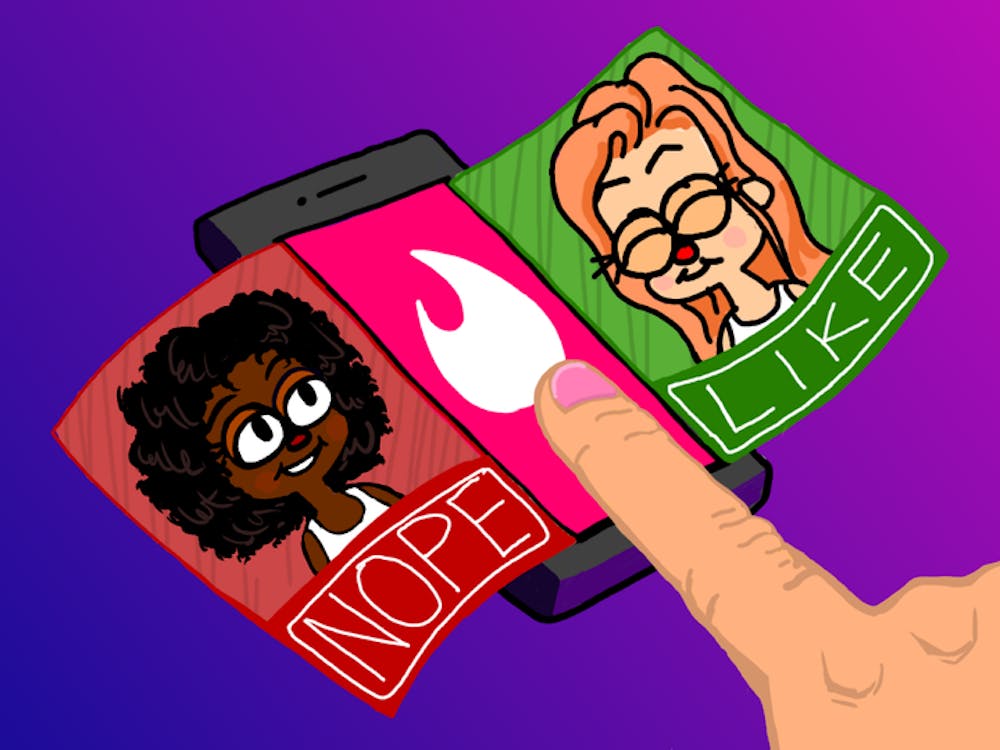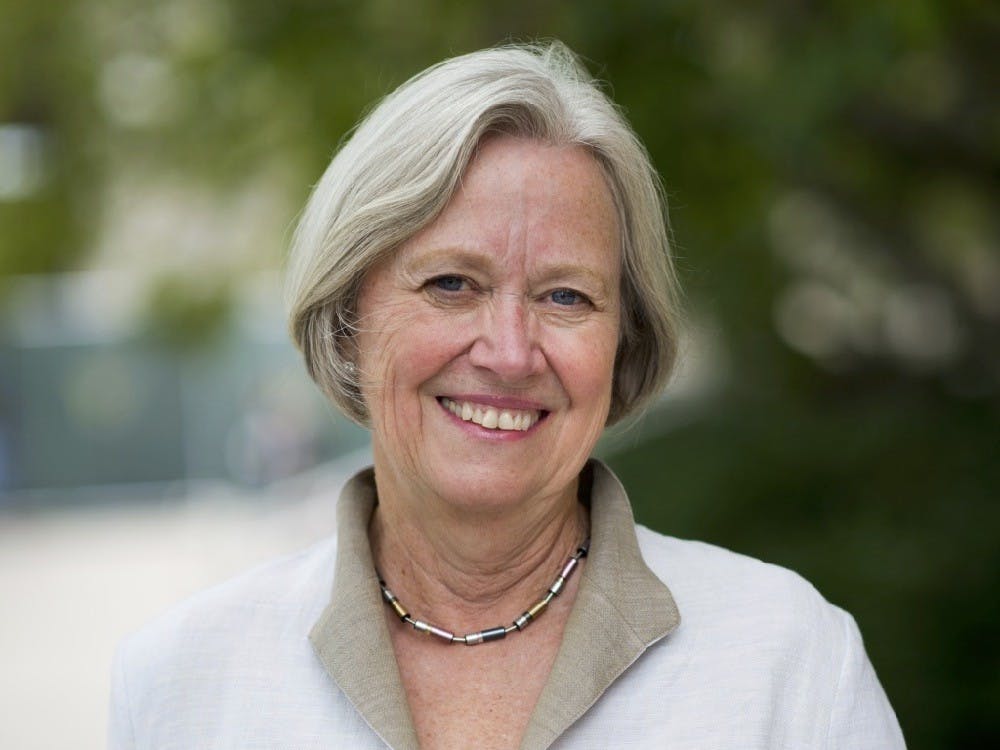A former friend once told me that she would never date a Black man because she finds dark skin unattractive. She is white. While I was not surprised by her statement, I nonetheless felt uncomfortable and frustrated. This was not the first time I encountered blatantly racist ideas about attractiveness, nor are such beliefs novel to many Black people and people of color, more broadly.
Racism is oddly tolerated in the dating realm, allowing racist beliefs to be passed off as innocuous “preferences.” However, such “preferences” mandate myopically believing in white-centric standards of beauty and lumping together people of color based on racist stereotypes.
Take the trend shown in the Tiktok video below as a microcosmic representation of this problem. The video starts with a white man pointing to the camera with the caption, “Look its the dude who think black girls attractive.” Seven other men (including Black men) responded to the video by recording themselves turning and looking over their shoulder, indicating that they do not find Black women attractive. This particular version ends with a different white man, @btcm_abbc, crossing his arms and leaning back against a table, indicating that he does think Black women are attractive. He says, “What about it?”
(Note that @btcm_abbc does not objectify or hypersexualize Black women. This would have been fetishization, which I talk about later.)
Not degrading Black women should be the bare minimum, yet here we are. Although users declare their “preferences” very casually, racism ultimately drives the belief that Black women are unattractive.
Race is a social construct not grounded in genetics. When early racial theorists/white supremacists invented race and used it to justify slavery and colonialism, they lauded whiteness as exceptionally attractive.
Building the myth of white supremacy also mandated the fabrication of stereotypes about appearance. However, no physical trait or set of traits is unique to or accurately describes an entire racial group.
While American beauty standards have somewhat evolved to be more inclusive, colorism is still rampant inside and outside of Black, Latinx, and Asian American communities; natural hairstyles are still widely regarded as “unprofessional” or “dirty” (unless the wearer is not Black); and representation of people of color in mainstream media is seriously lacking. This all stems, in part, from Western societies mobilizing a racialized definition of beauty and framing whiteness as a default state of being.
Blind adherence to the idea that proximity to whiteness equates to beauty fails to acknowledge that standards of beauty have to be created and sold, just like the racist beliefs that shape them. Therefore, racial “preferences” based on physical attributes are neither harmless or arbitrary: they are racist. Such beliefs ultimately result from internalizing, and thus perpetuating, overt or covert messaging that whiteness is superior.
This messaging also contributes to beliefs about personality based on race. If someone arrives at the conclusion that “x” group of people is un/attractive because they lack/possess “y” personality trait, they are dehumanizing and racially stereotyping members of that group. This includes stereotypes frequently used to justify “not preferring” members of certain racial groups (such as the stereotypes that Black women are too loud and Asian men are effeminate), as well as stereotypes that lead to “preferring” members of certain groups.

Stereotypes that rely on exoticizing and hypersexualizing people of color lead to fetishization, a sexual obsession fueled by objectification. Fetishization of Black men and women represents one example. The media’s obsession with the “Spicy Latina” represents another. Still one more is “yellow fever,” the fetishization of Asian people.
“Yellow fever” originates from popular Western portrayals of Asian women as submissive, passive, and exotic that proliferated during the 19th century. These stereotypes have persisted and since merged with the model minority myth, contributing to the fetishization of Asian women among the white supremacists of the alt-right. Obsession with male K-pop idols and their “soft masculinity” has contributed to the fetishization of Asian men as well.
@_itsjing lists real messages she has received from men who have “yellow fever.”
Fetishizing someone is not a compliment. “Yellow fever” fails to recognize the individuality, personality, and humanity of Asian people, instead reducing them down into the same monolithic caricature on the basis of their race.
@sourandnasty talks about a related problem: the idea that someone would only be attracted to Asian people if they have “yellow fever.”
Think about which traits are attractive to you. Do you want a partner who has a good sense of humor? Someone who is kind and compassionate? Flirty? Thoughtful? Loyal? Would you avoid someone who is rude? Dishonest? A bad listener? These are human traits that have nothing to do with race. Someone saying that they do/do not “prefer” members of a certain race based on their having/lacking those traits is simply absurd.
The video below demonstrates this: in it, @mmdvg40 acts as himself and a potential romantic interest (played by him with a paper towel on his head). The romantic interest describes various traits she finds attractive, such as a sense of humor and a taste for indie music, all of which @mmdvg40 possesses. However, he eventually figures out that she has a bias against Black men, despite claiming to be “not racist.”
Across the political spectrum, those who pride themselves on being anti-racist (or at least emphatically claim that they are “not racist”) sometimes fail to engage with how their beliefs have been shaped by systems and messaging intended to perpetuate racial inequality.
In the video below, @ambermorman46 and a co-TikToker say, “Were we really ugly, or did we just go to a predominantly white school? Anyways.” The point is that whiteness is not the pinnacle of beauty despite the racist spaces and beliefs that promote it as such.
Too often at institutions like Princeton and beyond, the euphemizing language of “preference” is used to conceal beliefs that result from failure to question and willingness to embrace the tenets of white supremacy deeply embedded into Western societies. An ignorant conception of beauty centered on whiteness and characterized by stereotypes perpetuates racism, regardless of how insistently someone maintains that their “preferences” are “not racist.”
Brittani Telfair is a junior from Richmond, Va. majoring in SPIA and pursuing a certificate in African American Studies. She can be reached at btelfair@princeton.edu.









